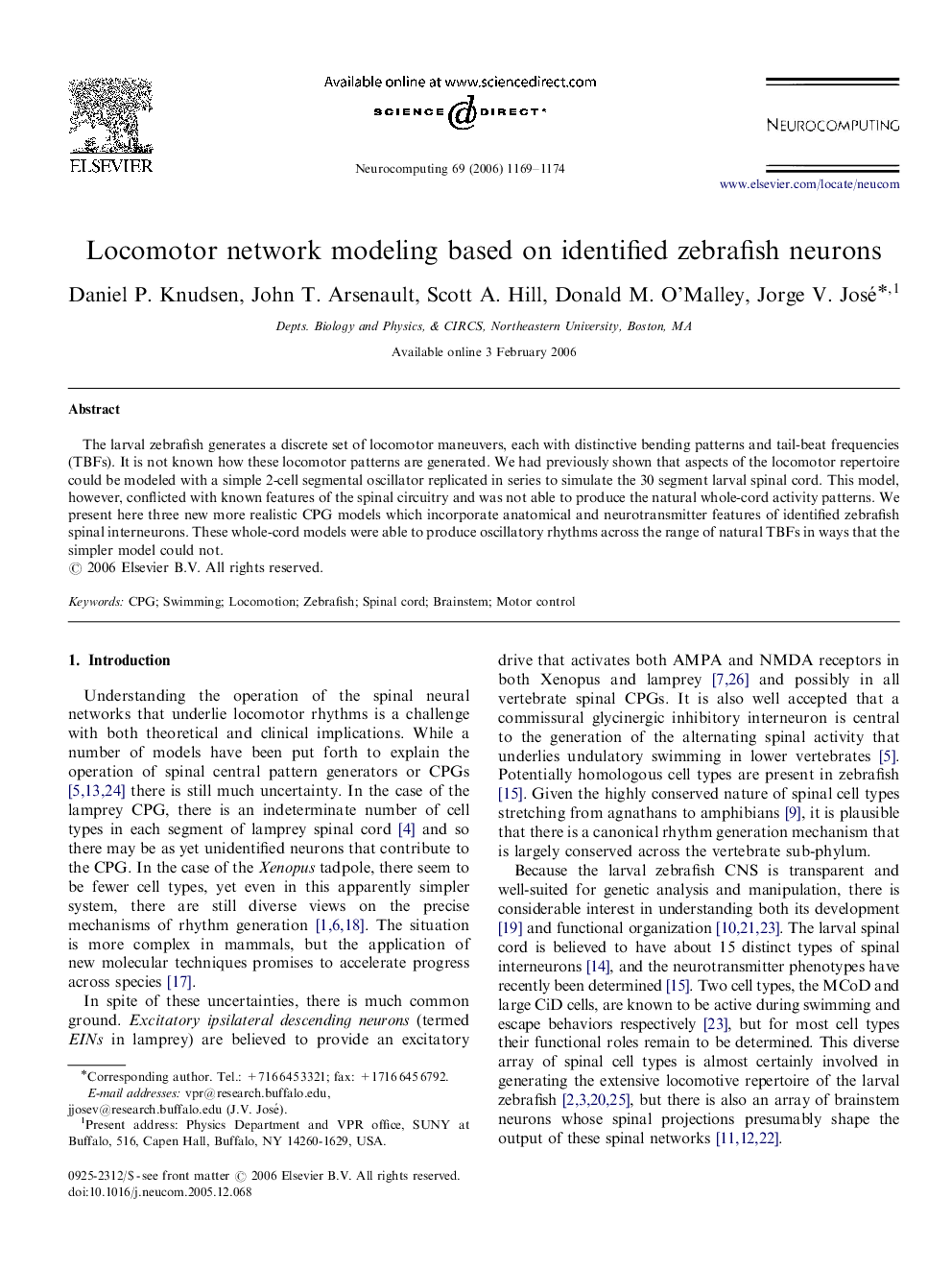| Article ID | Journal | Published Year | Pages | File Type |
|---|---|---|---|---|
| 408733 | Neurocomputing | 2006 | 6 Pages |
The larval zebrafish generates a discrete set of locomotor maneuvers, each with distinctive bending patterns and tail-beat frequencies (TBFs). It is not known how these locomotor patterns are generated. We had previously shown that aspects of the locomotor repertoire could be modeled with a simple 2-cell segmental oscillator replicated in series to simulate the 30 segment larval spinal cord. This model, however, conflicted with known features of the spinal circuitry and was not able to produce the natural whole-cord activity patterns. We present here three new more realistic CPG models which incorporate anatomical and neurotransmitter features of identified zebrafish spinal interneurons. These whole-cord models were able to produce oscillatory rhythms across the range of natural TBFs in ways that the simpler model could not.
